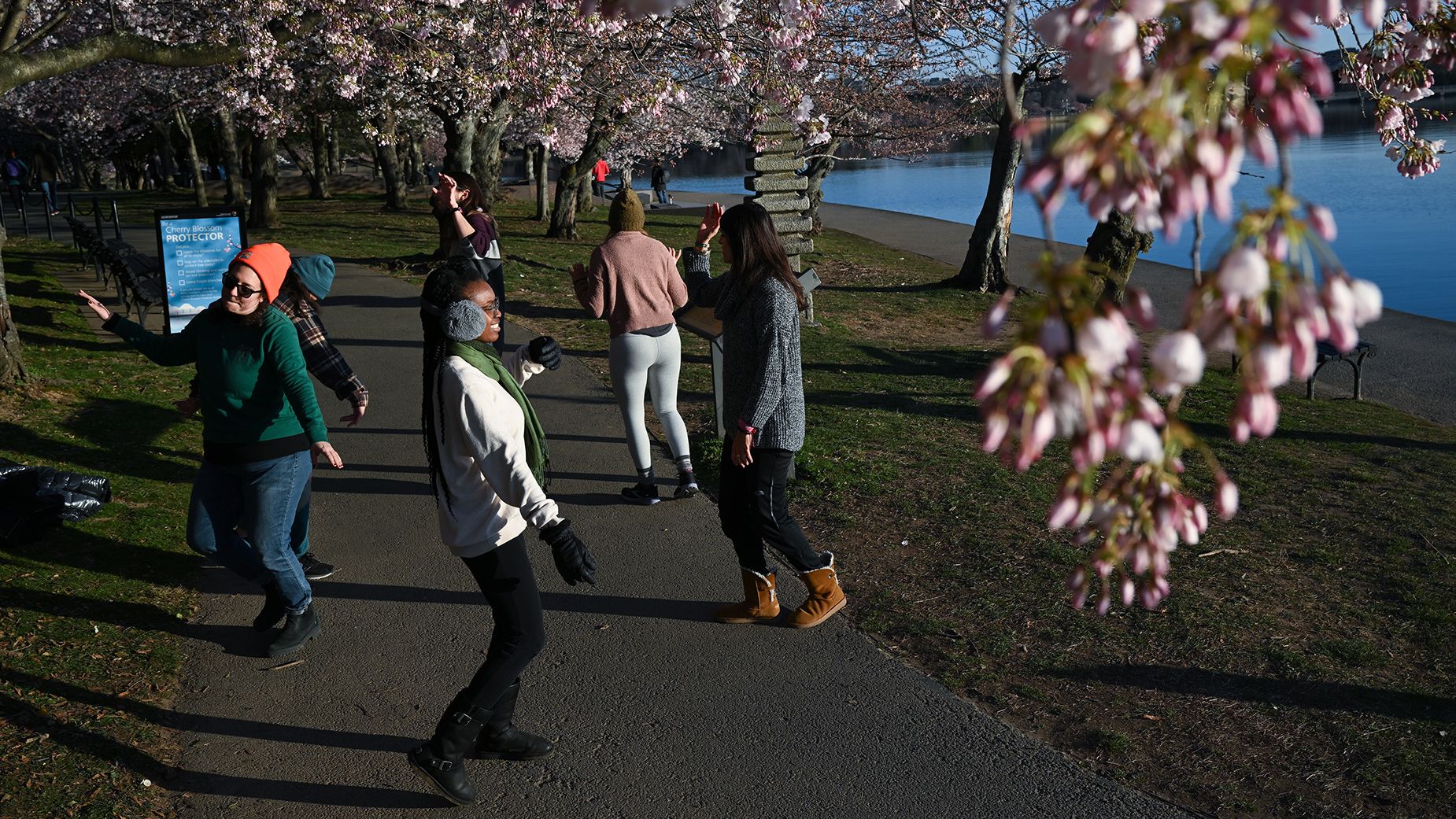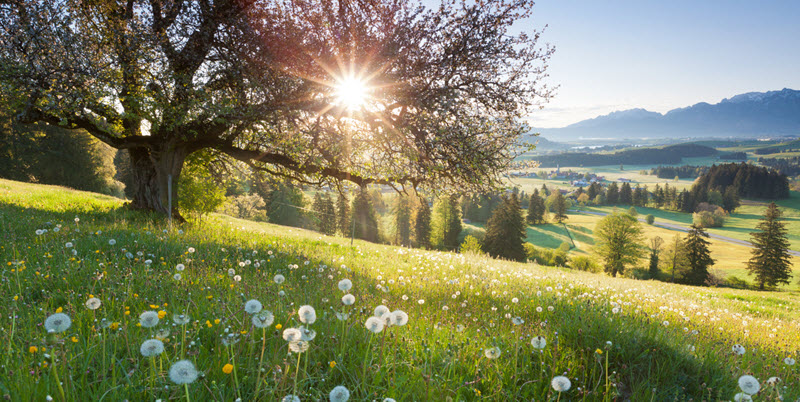First Day of Spring
First Day of Spring: Myths, Facts, and Equinox Science
For starters: Were day and night equal on the spring equinox?

In a long exposure from the Canary Islands, sun and stars streak the sky on last year's spring equinox.
PHOTOGRAPH BY JUAN CARLOS CASADO, TWAN
In the Northern Hemisphere spring officially began at 7:21 p.m. ET on Sunday, March 20, 2011—the vernal equinox, or spring equinox (see spring equinox pictures).
But don't be fooled by the old rumor that on the spring equinox the length of day is exactly equal to the length of night.
The true days of day-night equality always fall before the spring equinox and after the autumnal, or fall, equinox, according to Geoff Chester, a public affairs specialist with the U.S. Naval Observatory in Washington, D.C.
"Exactly when it happens depends on where you are located on the surface of the Earth," he said.
By the time the center of the sun passes over the Equator—the official definition of equinox—the day will be slightly longer than the night everywhere on Earth. The difference is a matter of geometry, atmosphere, and language.
(Video: Equinox Balances Day and Night.)
Geometry, Atmosphere, Language of the Spring Equinox
If the sun were just a tiny point of light and Earth had no atmosphere, then day and night would each be exactly 12 hours long on a spring equinox day.
But to begin with, as seen from Earth, the sun is nearly as large as a little fingertip held at arm's length, or half a degree wide.
Sunrise is defined as the moment the top edge of the sun appears to peek over the horizon. Sunset is when the very last bit of the sun appears to dip below the horizon.
The spring equinox, however, occurs when the center of the sun crosses the Equator.
Plus, Earth's atmosphere bends the sunlight when it's close to the horizon, so the golden orb appears a little higher in the sky than it really is.
As a result, the sun appears to be above the horizon a few minutes earlier than it really is.
Therefore, on the spring equinox day, the daylight hours are actually longer than the length of time between when the sun crosses the horizon at dawn and when the sun crosses the horizon at sunset.
"Those factors all combine to make the day of the equinox not the day when we have 12 hours of light and darkness," Chester said.
Spring Equinox Special Nonetheless
The length of day and night may not be equal on the spring equinox, but that doesn't make the first day of spring any less special.
The fall and spring equinoxes, for starters, are the only two times during the year when the sun rises due east and sets due west, according to Alan MacRobert, a senior editor with Sky & Telescope magazine.
The equinoxes are also the only days of the year when a person standing on the Equator can see the sun passing directly overhead.
On the Northern Hemisphere's vernal equinox day, a person at the North Pole would see the sun skimming across the horizon, beginning six months of uninterrupted daylight.
A person at the South Pole would also see the sun skim the horizon, but it would signal the start of six months of darkness.
Pope Shuffles Spring Equinox
Another equinox oddity: A rule of the calendar keeps spring almost always arriving on March 20 or 21—but sometimes on the 19th—MacRobert said.
In 1582 Pope Gregory XIII established the Gregorian calendar, which most of the world now observes, to account for an equinox inconvenience.:max_bytes(150000):strip_icc()/GettyImages-1205759449-08bbe68ed759499fb174f77cdab30324.jpg)
If the he hadn't established the new calendar, every 128 years the equinox would have come a full calendar day earlier—eventually putting Easter in chilly midwinter.
"It begins with the fact that there is not an exact number of days in a year," MacRobert said.
Before the pope's intervention, the Romans and much of the European world marked time on the Julian calendar.
Instituted by Julius Caesar, the old calendar counted exactly 365.25 days per year, averaged over a four-year cycle. Every four years a leap day helped keep things on track.
It turns out, however, that there are 365.24219 days in an astronomical "tropical" year—defined as the time it takes the sun, as seen from Earth, to make one complete circuit of the sky.
Using the Julian calendar, the fall and spring equinoxes and the seasons were arriving 11 minutes earlier each year. By 1500 the spring equinox had fallen back to March 11.
To fix the problem, the pope decreed that most century years (such as 1700, 1800, and 1900) would not be leap years. But century years divisible by 400, like 2000, would be leap years.
Under the Gregorian calendar, the year is 365.2425 days long. "That gets close enough to the true fraction that the seasons don't drift," MacRobert said.
With an average duration of 365.2425 days, Gregorian years are now only 27 seconds longer than the length of the tropical year—an error which will allow the gain of one day over a period of about 3,200 years.
Nowadays, according to the U.S. Naval Observatory's Chester, equinoxes migrate through a period that occurs about six hours later from calendar year to calendar year, due to the leap year cycle.
The system resets every leap year, slipping a little bit backward until a non-leap century year leap nudges the equinoxes forward in time once again.
Source
https://www.nationalgeographic.com/science/article/100321-first-day-spring-equinox-2011-vernal-science
https://www.nationalgeographic.com/science/article/vernal-equinox-2011-first-day-spring-science
https://www.rd.com/list/spring-equinox-facts/
https://ca.news.yahoo.com/blogs/geekquinox/first-day-spring-myths-facts-vernal-equinox-174145613.html?pt=2
https://www.almanac.com/content/first-day-spring-vernal-equinox









































